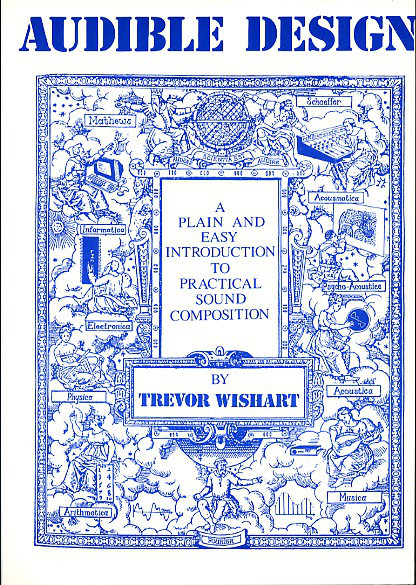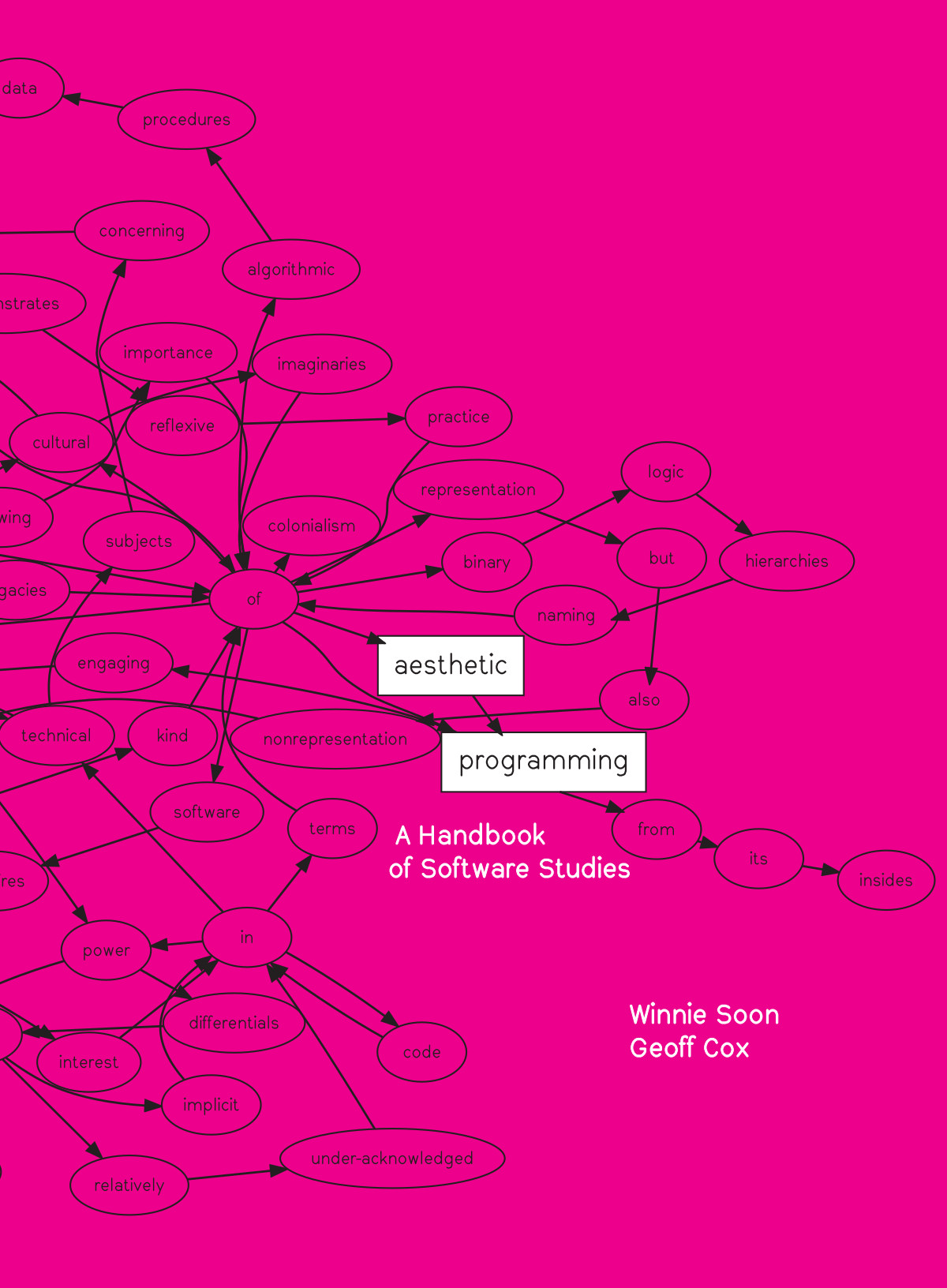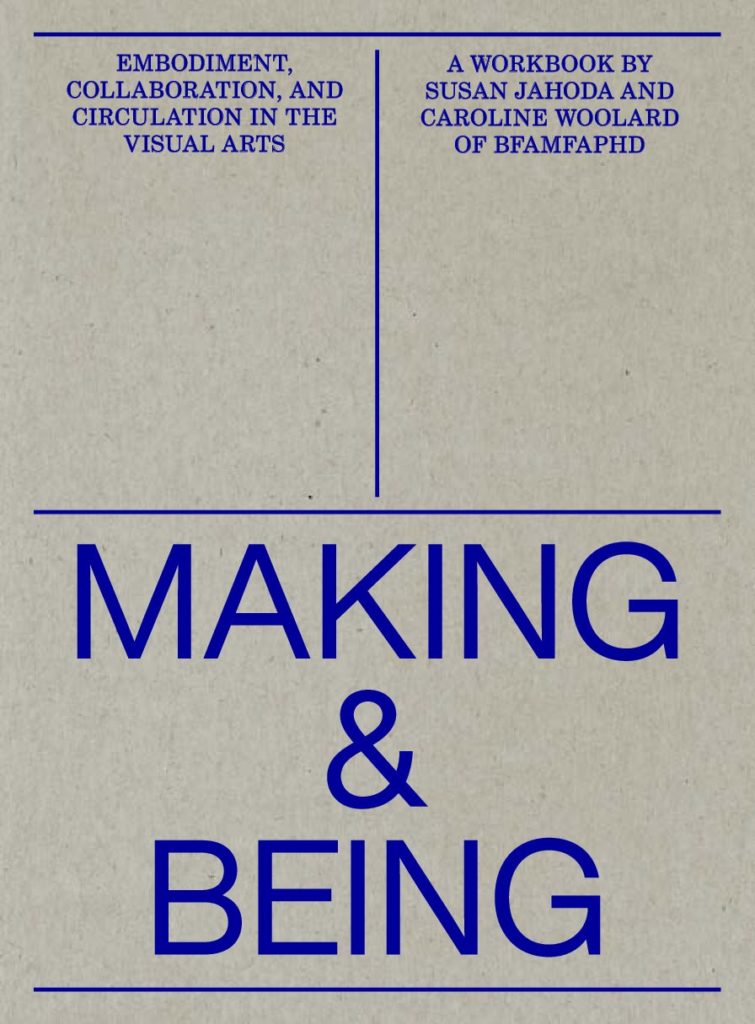Trevor Wishart: Audible Design: A Plain and Easy Introduction to Practical Sound Composition (1994)
Filed under book, handbook | Tags: · composing, composition, electronic music, music, sound

“This book provides detailed description of the craft of sound transformation using software instruments, with non-mathematical explanations and recorded music examples of all processes.
Many of these processes (e.g. sound morphing, spectral stretching, waveset distortion, sound shredding, grain manipulation, moving harmonic field filters) were first developed by Trevor Wishart, either at IRCAM, or as part of the Composers Desktop Project.”
Publisher Orpheus the Pantomime, 1994
139 pages
via author, HT xgz
PDF, PDF
Appendices PDF, PDF (57 MB)
Audio examples: Chapters 1-3, Chapter 4-6, Chapter 7-10, Chapter 11-13 (Bandcamp)
Winnie Soon, Geoff Cox: Aesthetic Programming: A Handbook of Software Studies (2020)
Filed under handbook | Tags: · aesthetics, algorithm, code, computation, data, programming, software, software studies

“Aesthetic Programming explores the technical as well as cultural imaginaries of programming from its insides. It follows the principle that the growing importance of software requires a new kind of cultural thinking — and curriculum — that can account for, and with which to better understand the politics and aesthetics of algorithmic procedures, data processing and abstraction. It takes a particular interest in power relations that are relatively under-acknowledged in technical subjects, concerning class and capitalism, gender and sexuality, as well as race and the legacies of colonialism. This is not only related to the politics of representation but also nonrepresentation: how power differentials are implicit in code in terms of binary logic, hierarchies, naming of the attributes, and how particular worldviews are reinforced and perpetuated through computation.
Using p5.js, it introduces and demonstrates the reflexive practice of aesthetic programming, engaging with learning to program as a way to understand and question existing technological objects and paradigms, and to explore the potential for reprogramming wider eco-socio-technical systems. The book itself follows this approach, and is offered as a computational object open to modification and reversioning.”
Publisher Open Humanities Press, 2020
Creative Commons BY-SA License
ISBN 9781785420948
293 pages
Review: David Young (Computational Culture, 2021).
PDF, PDF
HTML (added on 2021-6-8)
Git
Susan Jahoda, Caroline Woolard: Making and Being: Embodiment, Collaboration, and Circulation in the Visual Arts, a Workbook (2019)
Filed under book, handbook | Tags: · art, art education, collaboration, collaborative art, copyright, design, education, labour, narrative, pedagogy, political economy

“Making and Being offers a framework for teaching art that emphasizes contemplation, collaboration, and political economy. Authors Susan Jahoda and Caroline Woolard, two visual arts educators and members of the collective BFAMFAPhD, share ideas and teaching strategies that they have adapted to spaces of learning which range widely, from self-organized workshops for professional artists to Foundations BFA and MFA thesis classes. This hands-on guide includes activities, worksheets, and assignments and is a critical resource for artists and art educators today. Making and Being is a book, a series of videos, a deck of cards, and an interactive website with freely downloadable content.”
Publisher Pioneer Works Press, Brooklyn, NY, October 2019
Creative Commons BY-SA License
ISBN 9781945711077, 1945711078
688 pages
Book website
Project website
Publisher
WorldCat

